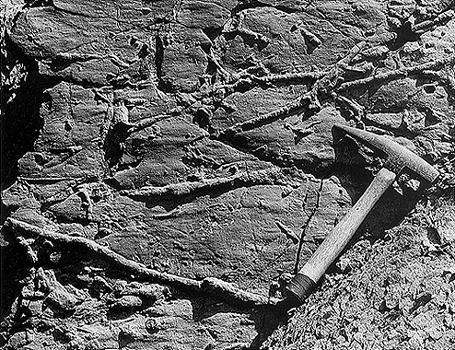
Horizontal burrows on a bed surface
Plate 156

Horizontal burrows on a bed surface
Plate 156
These horizontal burrows are relatively common at the base of turbidite beds and are attributed to generic wormlike animals. They cross each other and current markings, suggesting that the organisms penetrated the sand bed from above and moved along the interface with the underlying mud. Similar structures could be produced by casting with sand the furrows left by reptating animals on a muddy bottom. A mold, however, would be a half relief, whereas the burrows seen in the picture are full-relief, cylindrical structures.
Marnoso-arenacea Formation, northern Apennines.
| Photo: G. Piacentini 1970. |